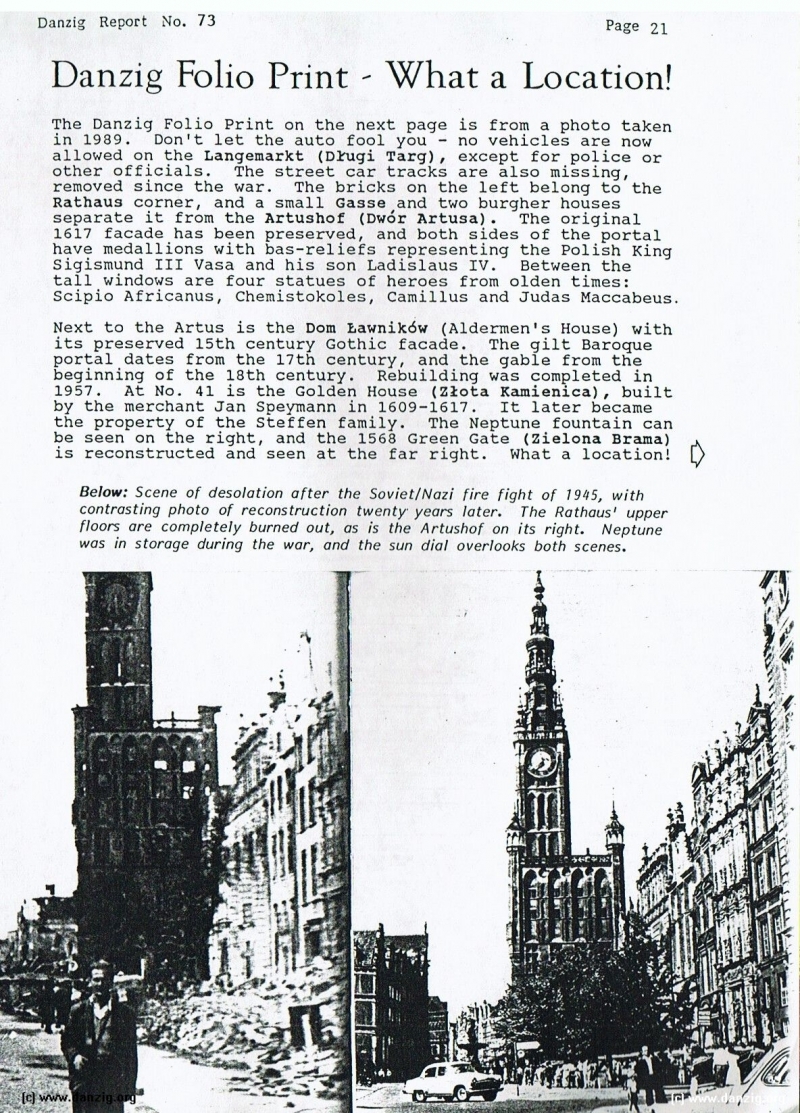
Danzig Folio Print What a Location!
The Danzig Folio Print on the next page is from a photo taken in 1989. Don’t let the auto fool you — no vehicles are now allowed on the Langemarkt (Dhigi Targ), except for police or other officials. The street car tracks are also missing, removed since the war. The bricks on the left belong to the Rathaus corner, and a small Gasse and two burgher houses separate it from the Artushof (DwcSr Artusa). The original 1617 facade has been preserved, and both sides of the portal have medallions with bas-reliefs representing the Polish King Sigisrnund III Vasa and his son Ladislaus IV. Between the tall windows are four statues of heroes from olden times: Scipio Africanus, Chemistokoles, Camillus and Judas Maccabeus.
Next to the Artus is the DOrn Lawników (Aldermen’s House) with its preserved 15th century Gothic facade. The gilt Baroque portal dates from the 17th century, and the gable from the beginning of the 18th century. Rebuilding was completed in 1957. At No. 41 is the Golden House (Ziota Kamienica), built by the merchant Jan Speymann in 1609-1617. It later became the property of the Steffen family. The Neptune fountain can be seen on the right, and the 1568 Green Gate (Zielona Brama) is reconstructed and seen at the far right. What a location!
Below: Scene of desolation after the Soviet/Nazi fire fight of 1945, with contrasting photo of reconstruction twenty years later. The Rathaus’ upper floors are completely burned out, as is the Artushof on its right. Neptune was in storage during the war, and the sun dial overlooks both scenes.
Danzig Report Vol. 1 - Nr. 73 - October - November - December - 1991, Page 21.
Hits: 2572
Added: 01/07/2015
Copyright: 2024 Danzig.org

